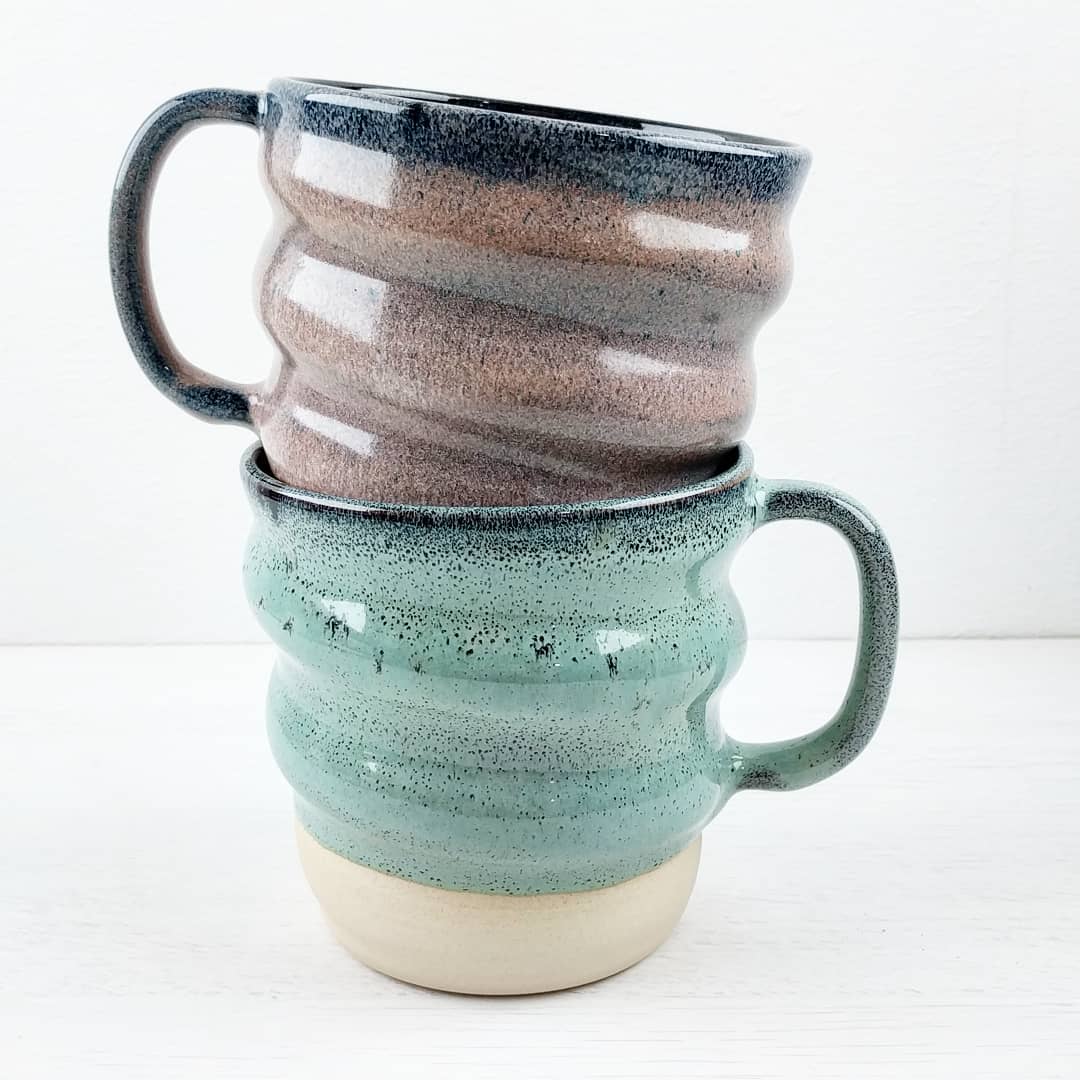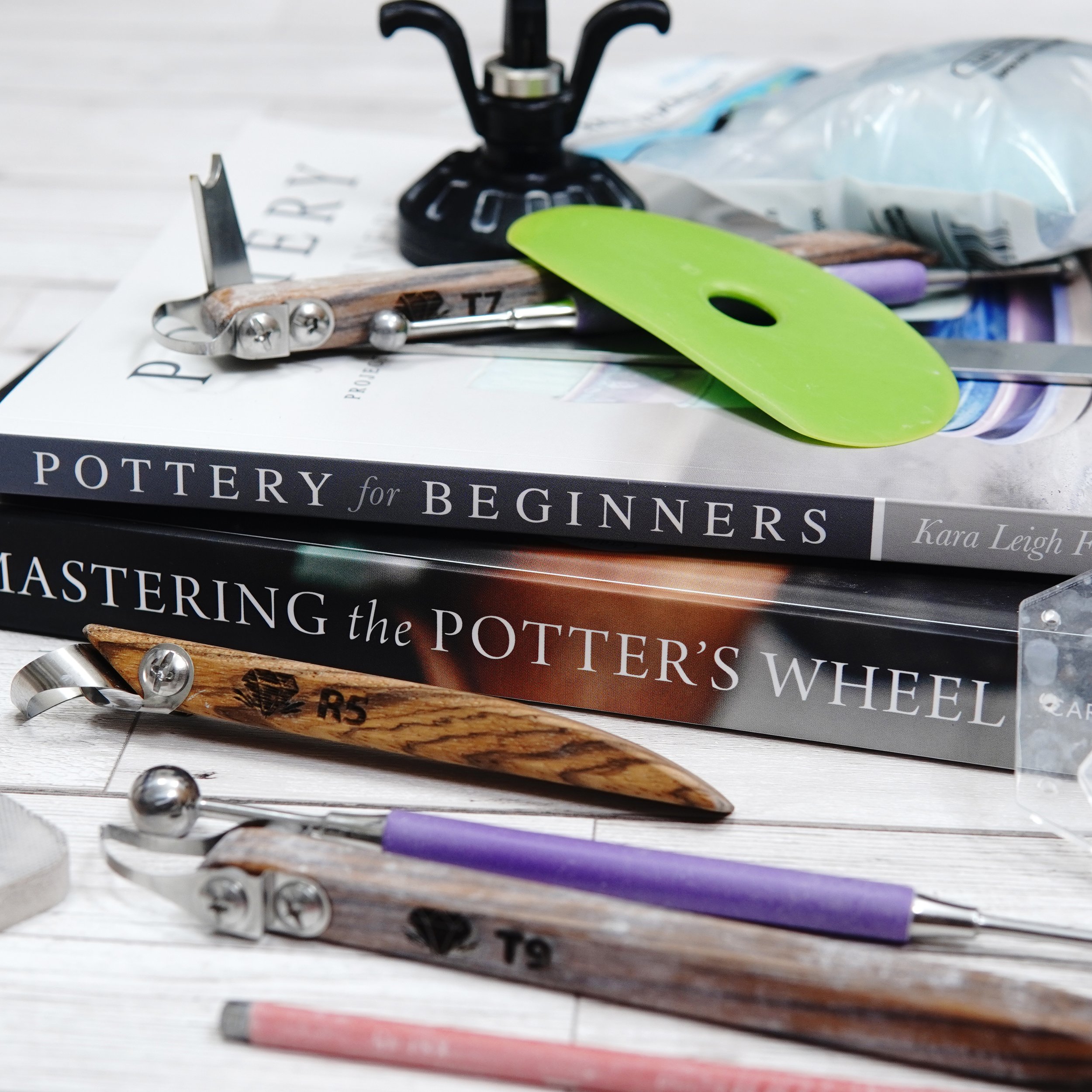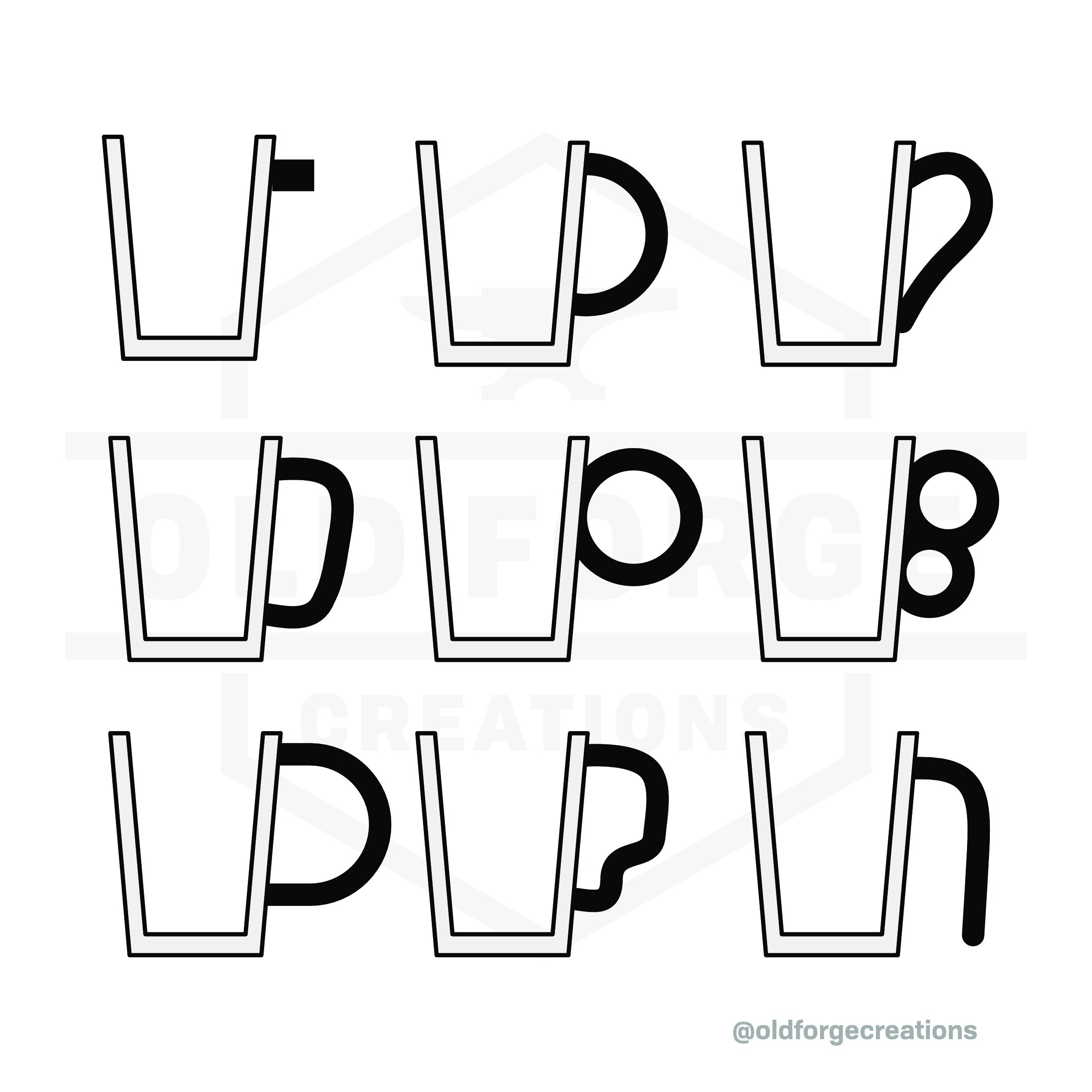Dehumidifiers - Should You Have One?
If you have your own studio, especially in a country like the UK, you’ll likely have experienced variability of drying times throughout the year.
I keep my studio fairly warm throughout the winter. In part, it’s so that I’m comfortable in there. But it’s also partly to make sure that the clay dries on a workable timescale. With energy prices climbing, I wondered if it was more cost effective to rely less on heating and more on a dehumidifier this year.
From what I can see (at least here in the UK) it is absolutely worth it. Dehumidifiers are good at dehumidifying (obviously) but they also can heat with significantly more than 150% efficiency (more on that further down), making them a better choice of heater than an electrical heater.
Humidity
Humidity is water vapour in the air. It gets there when liquid water evaporates, and leaves when the water vapour condenses back into liquid water. The humidity inside a building will be a result of the humidity of the air outside and the conditions inside the building (damp/watertight, heated/cold, full/empty, etc).
Absolute / Relative
A very important concept when looking at humidity is the difference between absolute and relative numbers.
If I told you that 100 people had bought tickets to see me talk about humidity, you’d initially be impressed that anyone wanted to come at all, then you’d start to wonder if you could come too. If I’d booked a venue with a maximum audience of 100, I’d be at 100% capacity and there would be no room left. If I’d booked a 10000 seat arena, I’d be at 1% capacity and you’d get your choice of seats.
100 people is the absolute audience, and 100% or 1% would be the relative audience. Either number can be useful on its own, but both are required to get a real sense of what’s going on.
With humidity, the relative number is given as a percent and it works the same way. How much water is in the air, compared to how much water could be there. Very humid air is up near 100% (as much water in the air as it can hold) and very dry air is nearer 0% (can hold a lot more water).
The absolute number is given as the mass of water per volume of air (typically grams per cubic metre).
The reason that both numbers are needed to get a full picture is because the maximum amount of moisture that air can hold changes drastically with air temperature. The same absolute number can be a totally different relative number if the temperature changes.
For example - 9.4g/m3 would be 100% humidity at 10°C (the air is saturated, nothing will dry) but the same absolute number would be around 40% humidity at 25°C (things would easily dry). Obviously that’s a fairly big temperature change, at least in the context of a studio, but goes to show how much the relative humidity can change with the same absolute humidity.
Drying
All other things being equal, clay will dry faster with lower relative humidity. This can be achieved by raising the temperature and/or lowering the absolute humidity.
It’s also worth considering the relative humidity in the air around the clay. The reason that covering pieces in plastic sheets is so effective at controlling the drying rate is that the plastic traps air. This air rapidly increases in relative humidity until it reaches equilibrium and prevents further drying. If the plastic is perfectly sealed then the pieces cannot dry beyond this point, regardless of the conditions outside the sealed plastic.
Inversely, putting pieces in the middle of a room with some air movement will rapidly replace the humid air surrounding the piece and cause it to dry much faster than if there’s no airflow.
If you want to control (or pause/reverse) drying, then damp boxes are the best option:
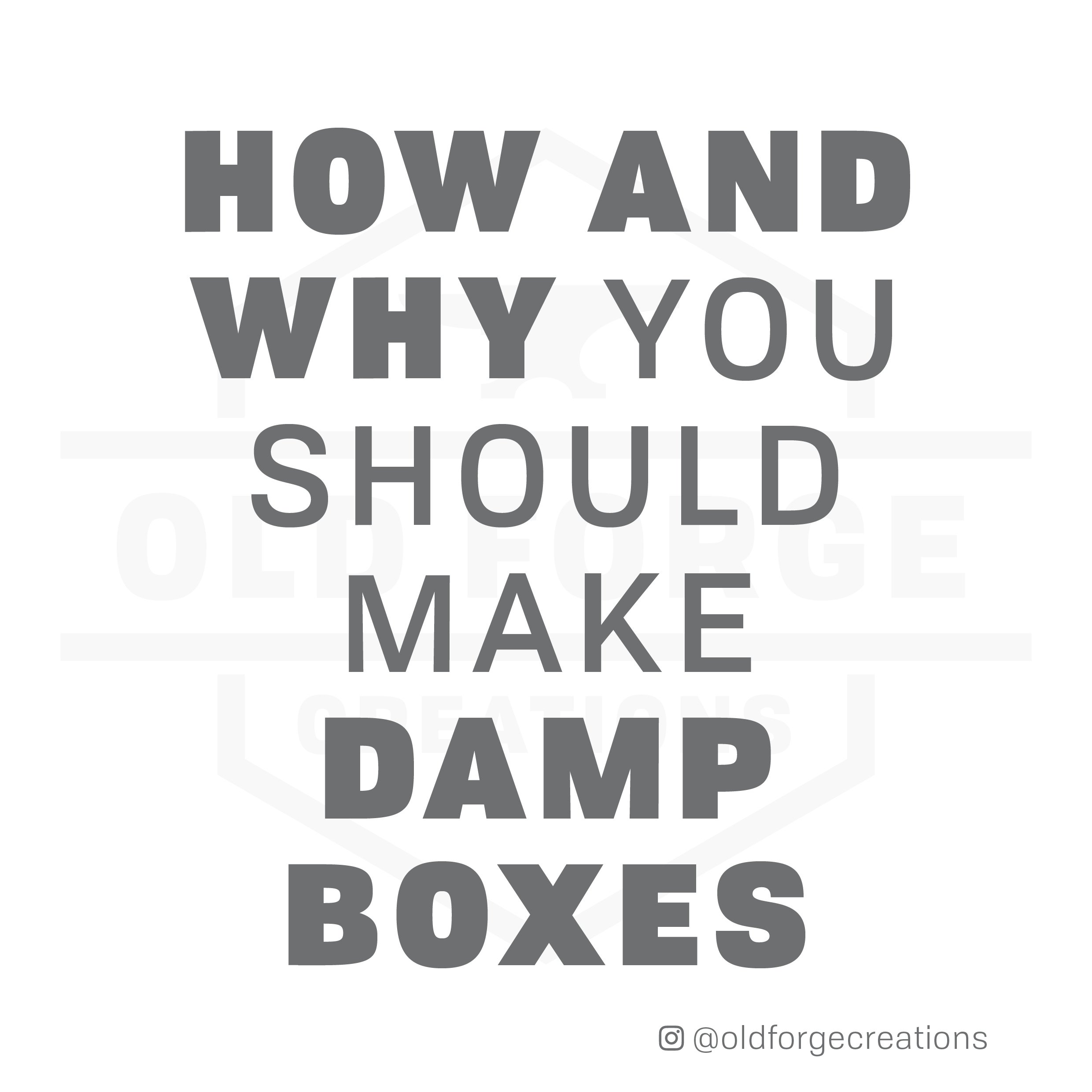
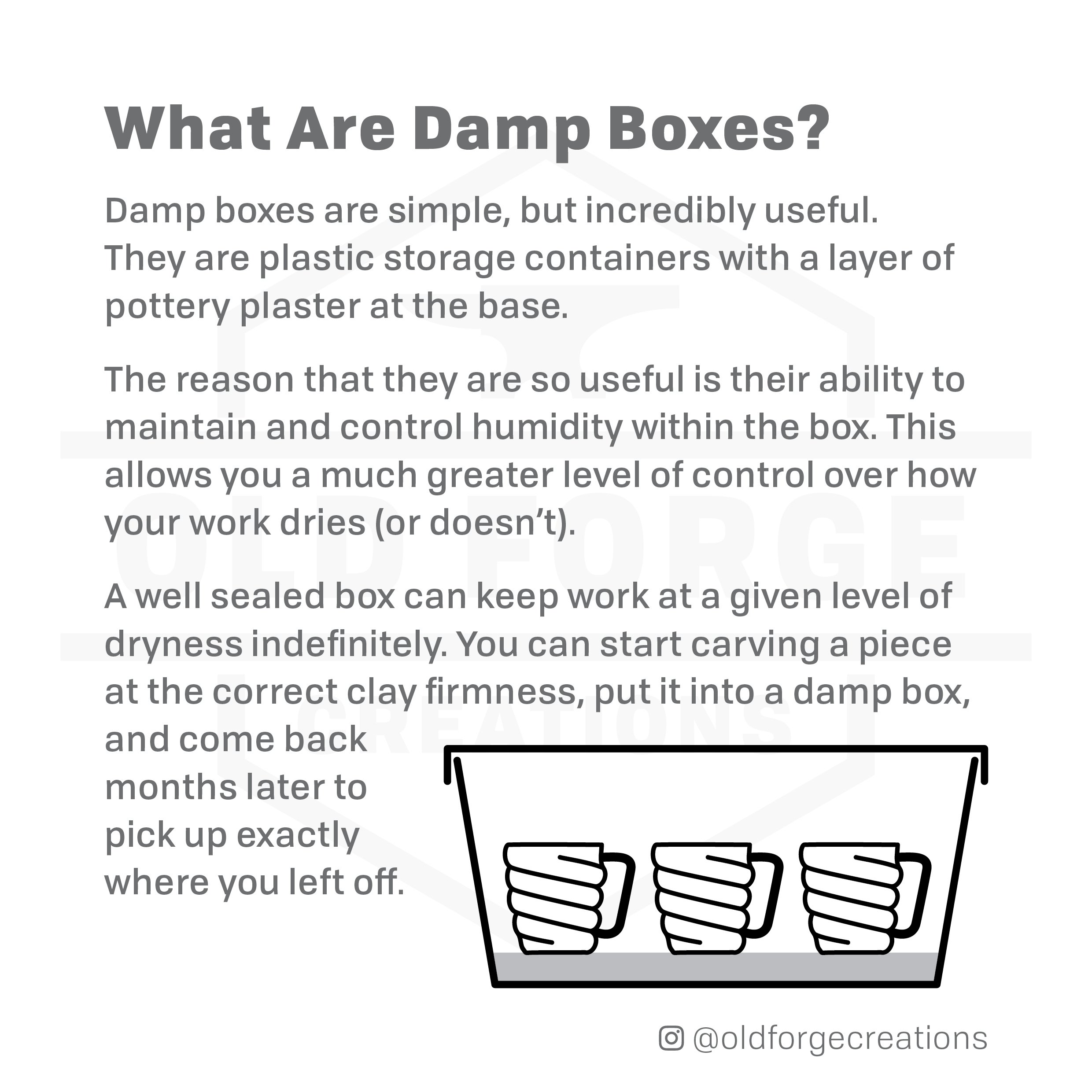
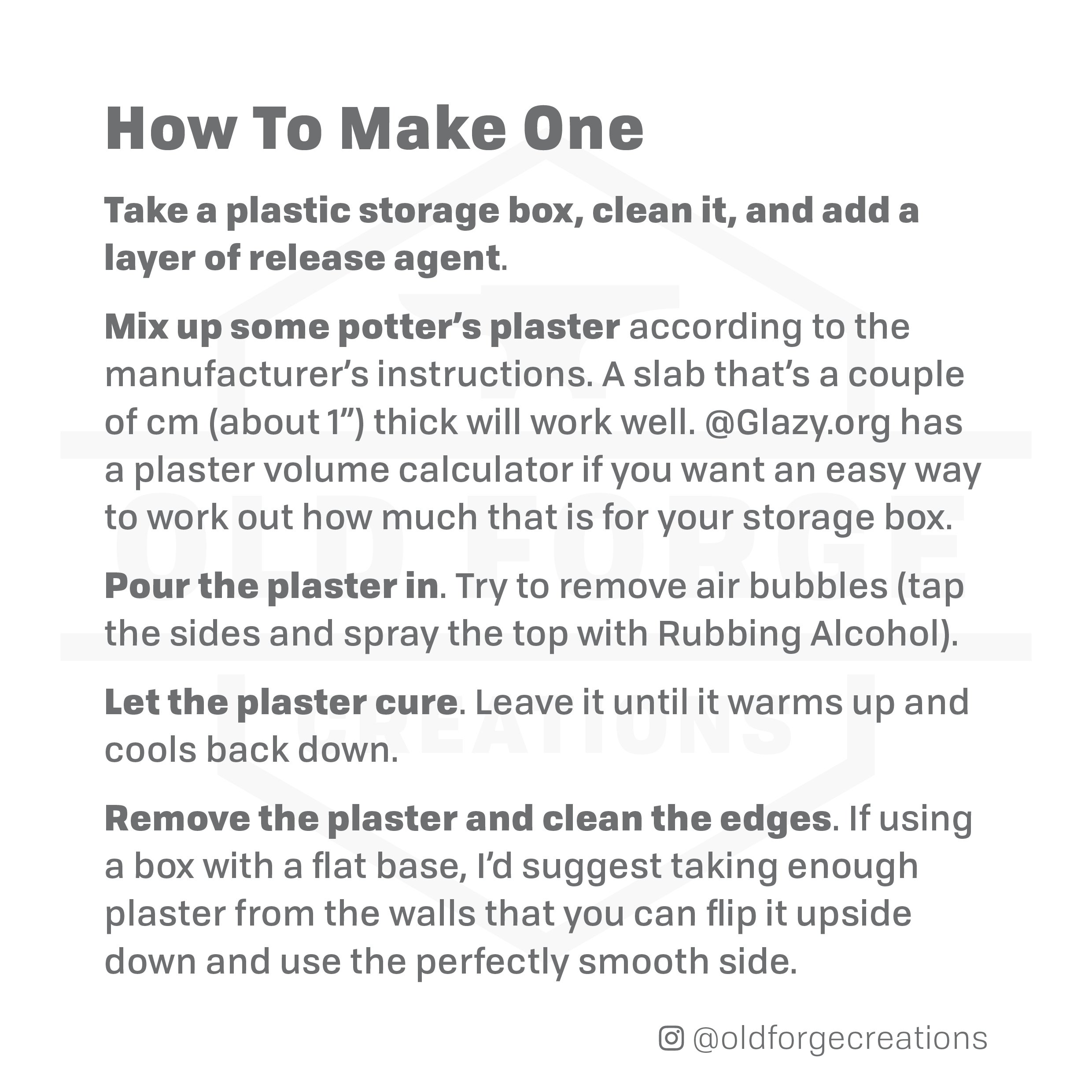

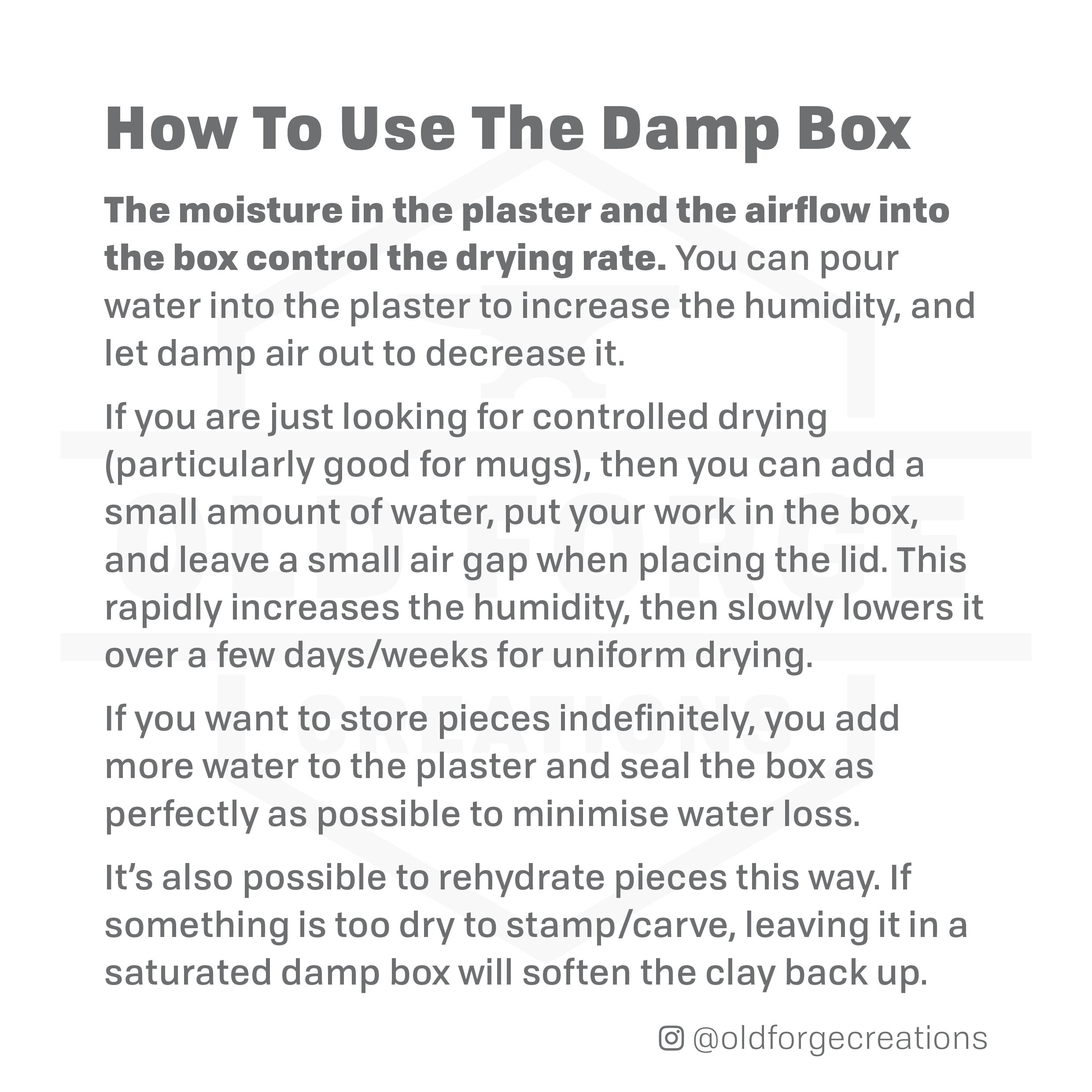
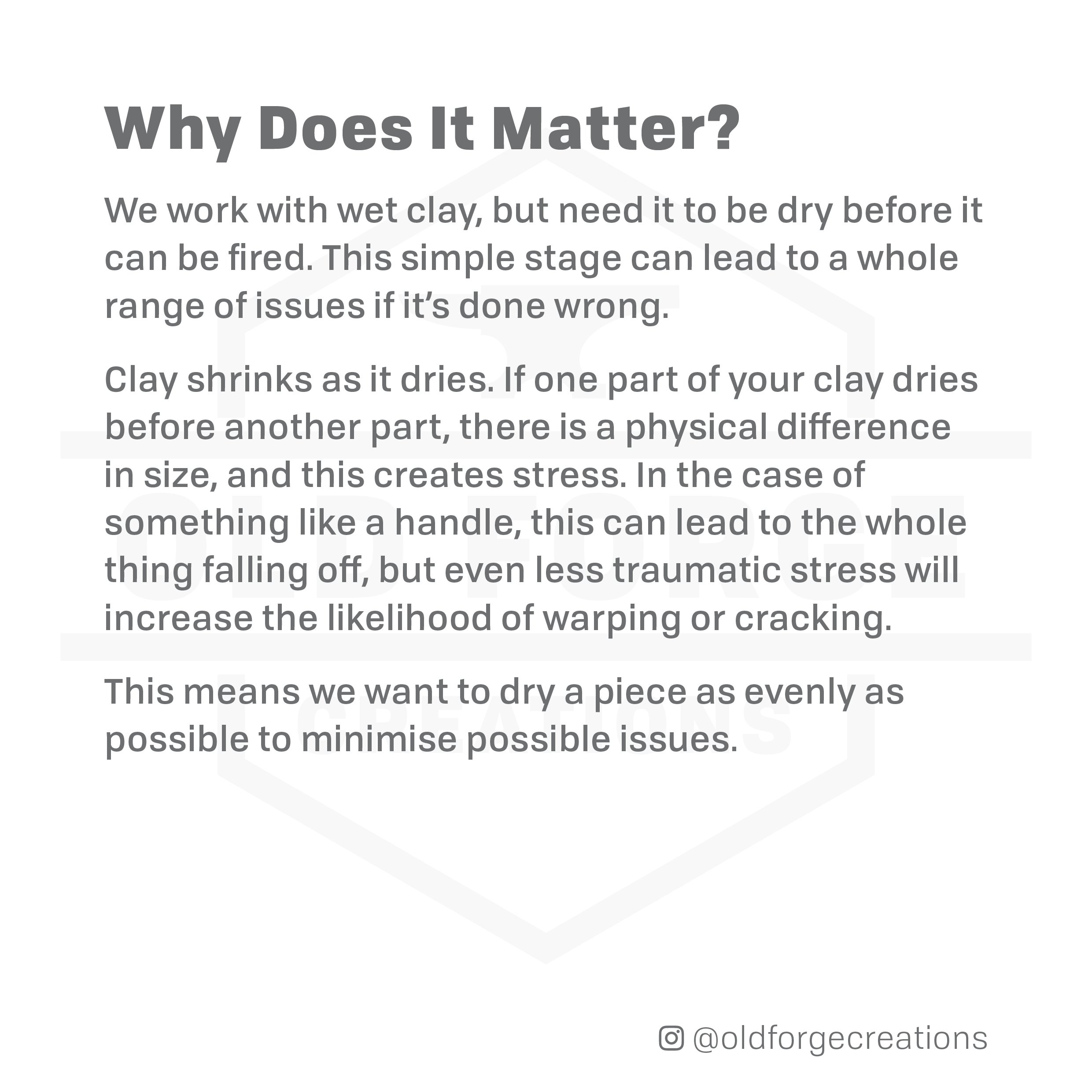
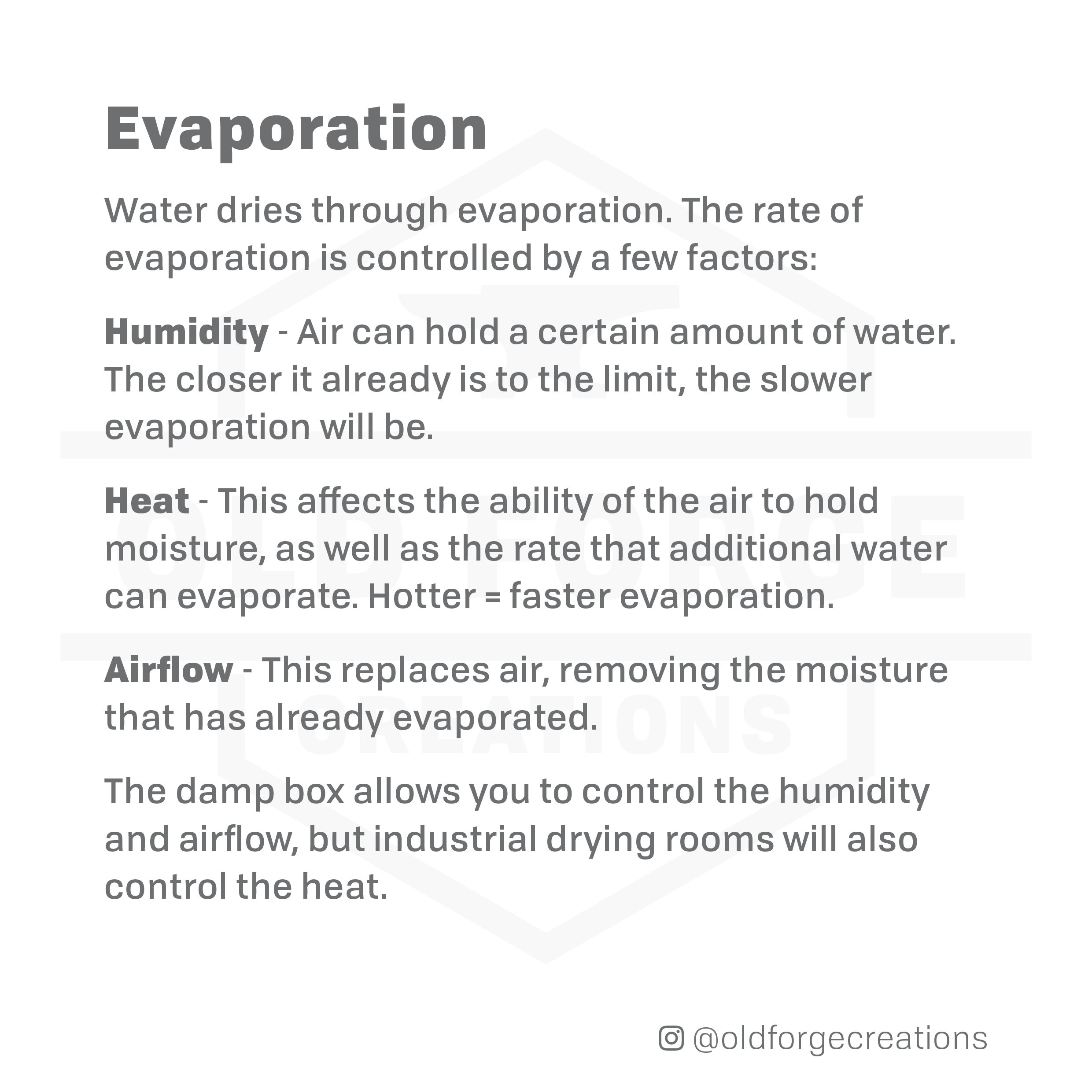
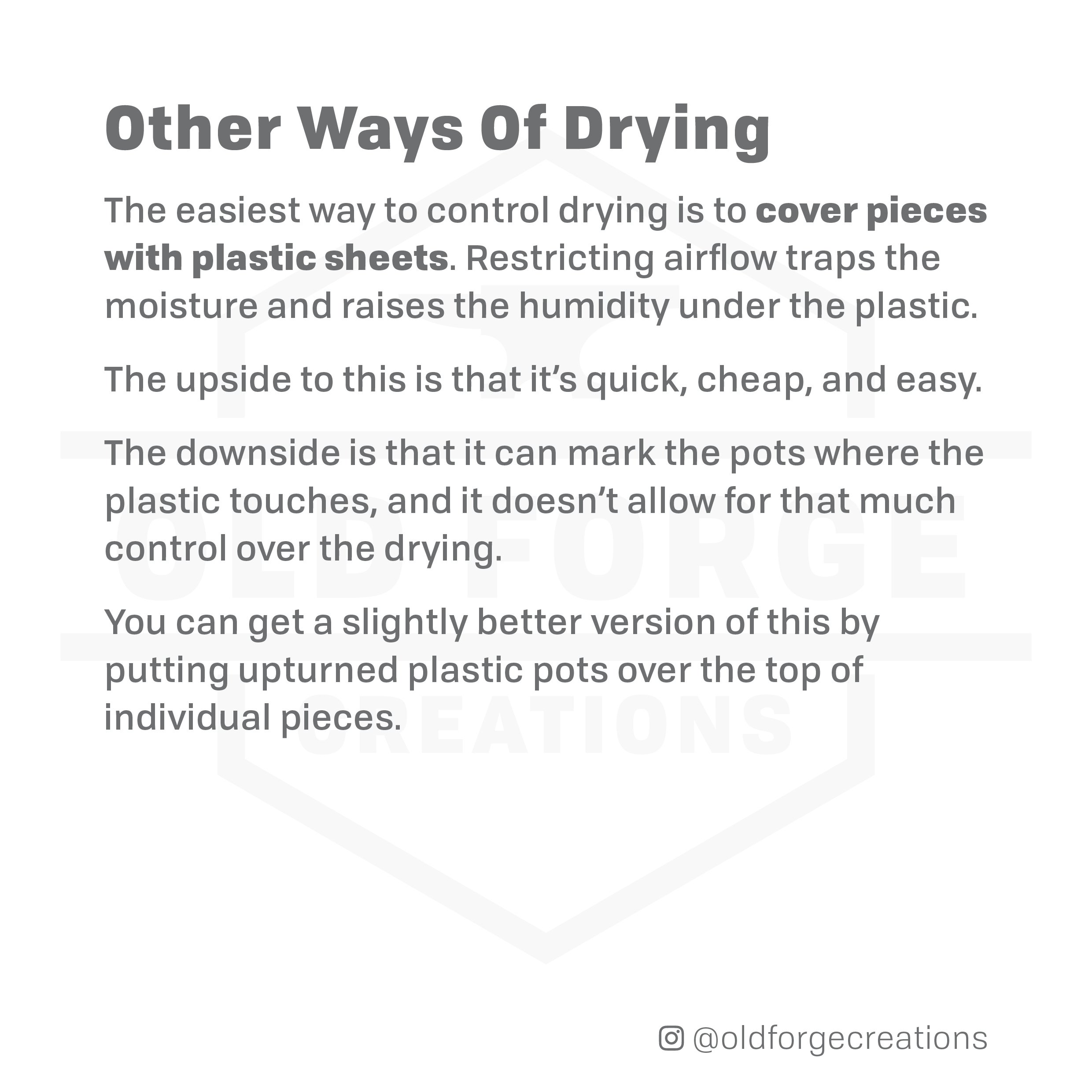
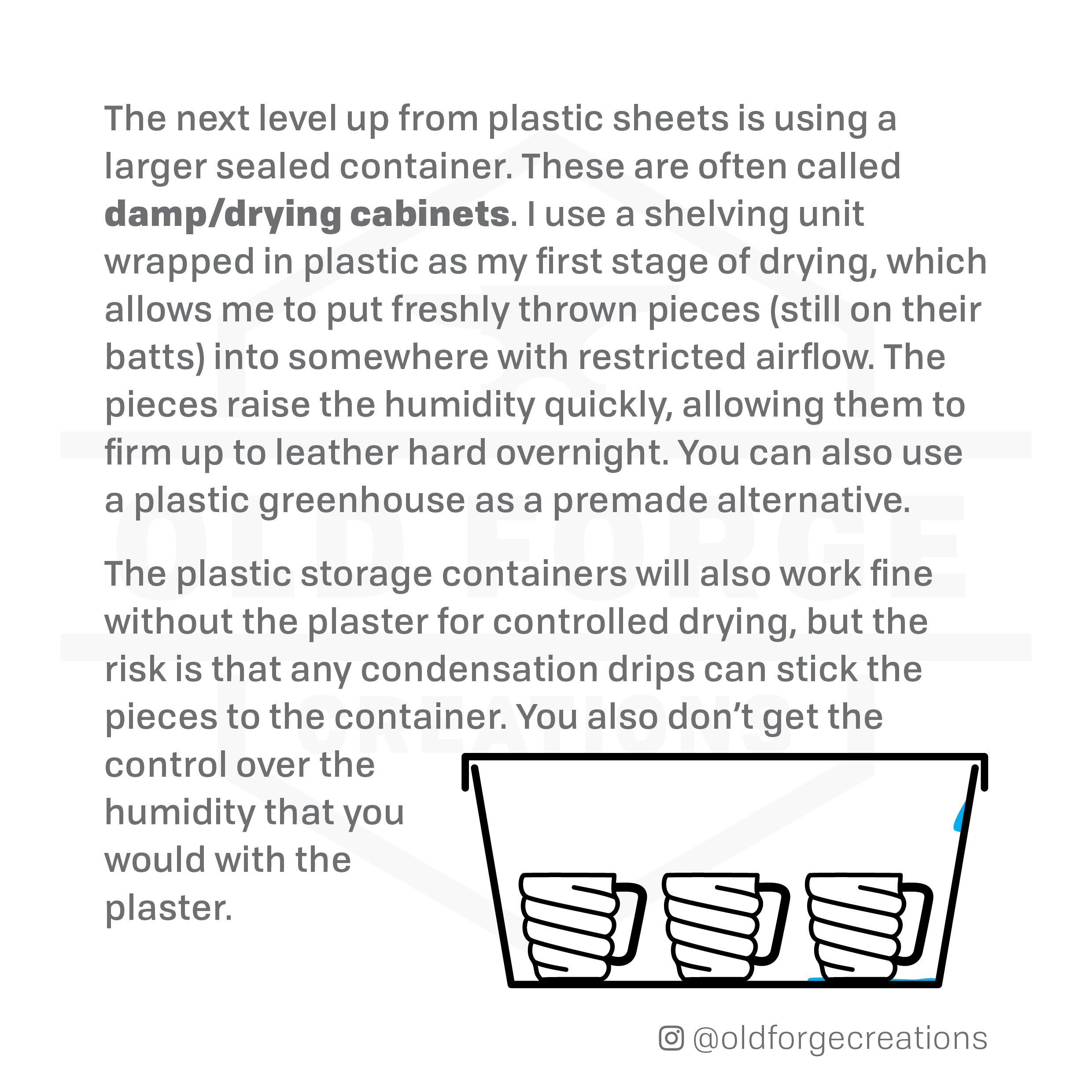
Dehumidifiers
There are a few different ways to remove water from the air, but I’m going to focus on compressor dehumidifiers.
The way they work is fairly simple. It’s the same technology as the compressor in a fridge or air conditioner, where pressure is used to produce a system with a hot surface and a cold surface. Depending on the goal, this difference in heat can be used in different ways, but it’s produced the same way.
In dehumidifiers, air is drawn in from the room and passed over the cold surface. This causes the water to condense out (colder air can’t hold as much moisture), and it’s collected or flows freely down a drain. The hot side is then used to warm the cold air back up to slightly above the room temperature. The net result is that air goes into a box with a higher humidity, and comes out with a lower humidity.
The process is quite efficient and requires relatively low energy, but it’s actually even more cost effective than it seems at first.
A smaller dehumidifier can use around 150-200w of power. With that energy, it will draw a few litres of water out of the air over the course of a day (they’ll say 12L a day, but that’s at an unlikely 30°C and 80% RH). The energy is used to power the compressor and fan, but it ultimately becomes heat energy as a waste product. If you were planning on using electricity to heat the room anyway the dehumidifying is essentially free, as the 150-200w power it uses is converted into heat that now doesn’t have to be provided by your actual heater.
Even better than that, water has a high specific heat capacity and latent heat (see more about those terms here). It would take a reasonable amount of energy to take cold water and turn it into water vapour, and if you reverse the process you gain that energy back. The amount of water extracted matters most here, but a typical 12L dehumidifier will have a tank of around 2L and that equates to around 1.3kWh worth of additional extracted energy (almost entirely from the latent heat).
That means every time you empty the 2L tank of water, you have gained the equivalent energy as running a 1kw electric heater for 80 minutes. That’s in addition to the energy you actually used, which has also become heat.
Note: Kilowatt is a rate of energy use. Kilowatt hour is a total energy use. You get to the kWh total use by multiplying the kW rate by the time it was used for (in hours). So a 1kW heater will use 1kWh per hour of use. A 200w (0.2kW) dehumidifier will take 5 hours of constant use to total 1kWh of energy.
It’s confusing and counterintuitive at first, but think of it as relocating heat rather than generating it. You’re taking the energy that the water vapour has absorbed elsewhere, and keeping the heat while disposing of the water. If you didn’t dispose of the water, it would reabsorb it when it evaporated again. In the same way that sweat evaporating cools you down, this is the same process in reverse.
Essentially, a compressor dehumidifier is a more cost effective heater than an electric heater (around 1.5-2x more effective), and gives free dehumidification too.
Humidity In The Studio
I did a story survey on my Instagram, and got around 150 responses with their studio sizes. They ranged from 2m² to 120m², with the mean size around 24m² and the median around 16m² (approx 250 and 170 square feet, respectively)
(I know some of you will be struggling to remember the difference between mean and median! Mean is the total divided equally, so if all the meters were added together and shared back out, everyone would get 24 of them. Median is the size of the studio in the middle of the list after sorting by size.
Having both can be useful. If the largest studio got 100x larger the mean would quadruple but the median is unchanged. If Jeff Bezos enters a soup kitchen, the mean net worth of everyone there would be in the billions, but that doesn’t tell you much about how the average person there is doing)
These are floor plan areas, and we need the volume. So if we multiply by a height of 2.5m, we get a mean studio volume of 60m³ and a median of 40m³.
Water In The Air
Air doesn’t hold much water. I didn’t realise just how little until looking for this post. At a room temperature of 20°C, the maximum amount of moisture one cubic meter could hold is 17.3g. A more realistic range is 7-14g (40%-80% relative humidity).
If we take 10g per m³ (just under 60% humidity), that would be 600g of water vapour (or 600ml, they’re the same) for the 60m³ studio and 400g for the 40m³.
This isn’t much water at all. A smaller dehumidifier will remove litres of water a day from the air. Where does the extra water come from?
Dynamic Equilibrium
Dynamic equilibrium just means a system is at a stable balance point (equilibrium) but that the individual parts of it aren’t necessarily staying still (dynamic). In our case, the overall humidity of a room might stay at a consistent level of 60% but the water molecules will be constantly evaporating and condensing.
Any material in the room capable of absorbing moisture will do so, until balance is reached. The water absorption percent of the material isn’t necessarily anywhere near the air humidity though, just because the air is at 60% humidity doesn’t mean the rest of the room is also 60% water.
Materials such as wood and fabric might be at 5-10% humidity (the technical term is equilibrium moisture content (EMC)) if the air is at 60%, whereas ceramic bricks will be more like 0.5%.
When a dehumidifier is turned on, the humidity of the air will drop, but will be rapidly replaced by moisture evaporating from the materials. Even if the air can only hold a small amount of moisture, there will be a lot more water to remove before the humidity is lowered significantly.
Essentially, a dehumidifier will be absorbing moisture from everything in the studio.
Plastic clay is around 25% water by weight. It will lose most of that as it dries. This equates to around 3 litres of water per 12kg bag, not including any water that gets added during the throwing process. This will all get added to the air, and reabsorbed by anything in the studio capable of doing so.
There is also the issue of the air outside the studio. As I type this, it’s raining in the UK. Some countries have consistently dry weather, but it’s generally pretty humid here. It’s not that warm though, so the absolute humidity is lower than a hot humid country, and the relative humidity inside a warm building will be lower just due to the way heat affects relative humidity.
Should You Use A Dehumidifier In The Studio?
It depends
A dehumidifier makes sense if:
You live in a country with cold and humid weather throughout the winter.
You heat your studio (especially with an electrical heater).
You want your pieces to dry faster (or at a more consistent rate) through the winter months.
You want to achieve the faster drying with lower energy usage.
If little/none of that applies, then there probably isn’t any need for one.
To recap the reasons why it would make sense:
Pieces dry better when the air is less humid and/or hotter.
Dehumidifiers provide both dehumidification and heating (not that much heating though).
Dehumidifiers are over 100% efficient as heaters (they provide more heat energy than they consume in electricity).
Studio can be kept a little colder without slowing the drying rate if the air is less humid, so there’s a double energy saving.
Airflow
A quick note at this point - Airflow around the studio is not recommended if the air has fine silica dust in it, as it increases the time that the dust will spend airborne and increases the risk of silicosis. Read more about that here. If you follow best practices for studio cleanliness then you shouldn’t be at much risk, but if it’s a concern for you then it is possible to get dehumidifiers with HEPA filters (which will remove the dust as the air passes through).
Which Dehumidifier To Get?
When I decided which I was going to buy, I went with the Which recommendation of the Meaco ABC 12L Dehumidifier. The spec of most dehumidifiers of that size seems to be pretty consistent, but this one was well reviewed and particularly quiet (35db). The energy usage is very low (160w max) so even running it 24hrs a day doesn’t cost much over £1 at 2022 electricity prices, and it has a humidity sensor so you can set it to only run when the humidity is above a certain percent.
If you’re in another country, you’ll have to do your own research if the Meaco isn’t available. The US equivalent seems to be a 22 pint size, which would be more than powerful enough for all but the largest studios (this one seems decent enough).
They’re not exactly cheap, but could easily pay for themselves in lower heating costs for the studio. They should also help avoid the frustration of sitting around waiting for pots to firm up enough, or the double frustration of not waiting long enough and ruining a piece that was too soft.
If you like this sort of content and want to support the creation of more, I now have a Patreon specifically for it or a page on my website if you just want to make a single donation.
